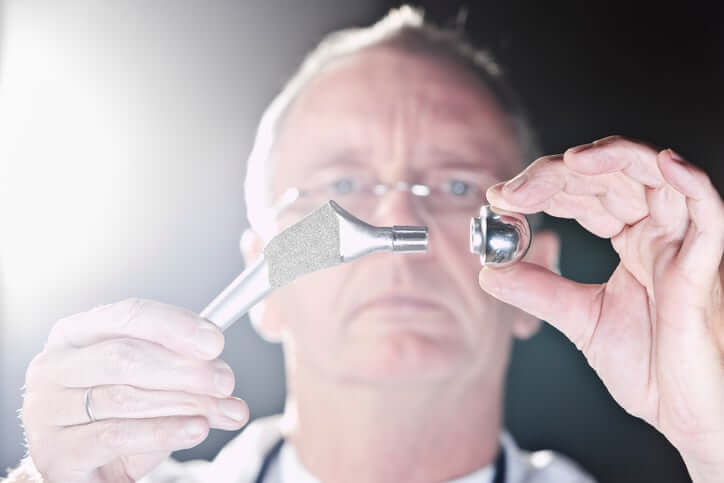Stryker Orthopaedics is one of the world’s largest device companies, manufacturing implants and joint replacement products. While their artificial knee and ankle systems are both popular and effective, Stryker’s modular hip replacements made the company successful. In fact, Rejuvenate Modular and ABG™ II modular-neck hip stems were best-sellers until their June 2012 safety recall. Stryker manufactures modular implants designed to provide better, more physically accurate implants for patients needing knee or hip replacement surgery. Their goal is to “provide the orthopaedic surgeon flexibility to choose from many implant options.” Most of their hip replacements fall into two categories: press-fit and cemented hip stem solutions.
Stryker Total Hip Replacement Systems
Stryker’s total hip replacement packages provides three main components to choose from: Acetabular, Primary Femoral and Revision Femoral. Surgeons can use most of Stryker’s “biologically-inspired” modular implant systems during partial or total hip replacement surgery. Since some patients don’t need a complete primary femoral component, Stryker offers several implants meant to promote osseointegration. Osseointegration occurs when living bone forms a direct, structural attachment to an artificial implant’s surface, anchoring it firmly in place.
When Artificial Hip Replacements Are Necessary
There are three predominant reasons surgeons recommend hip revision or artificial implant surgery:
- Pain in one or both affected hip(s)
- Lack of mobility
- Damaged prosthesis causing harm to the joint
In 2015, orthopedic surgeons performed 95% of total hip replacement procedures on patients aged 45 and older. However, recent reports show an increasing number of younger hip replacement surgery patients. People living more active lifestyles could explain the steady rise in artificial hip replacement procedures. In fact, sports injuries are one of the main reasons younger people need orthopedic surgery. Since people are living longer than ever before, orthopedic surgery’s more common as their hips and knees simply wear out.
Hip Replacement Surgery: What Patients Can Expect
Before your pain becomes unbearable, talk to your doctor about Total Hip Replacement surgery (THR). Over several hours, an orthopedic surgeon removes damaged cartilage and bone, then implants a prosthetic joint. Your surgeon may use additional hardware, cement, or other means to secure your new prosthesis firmly in place. Your doctor first need to approve your THR surgery request before scheduling your procedure.
Here are six standard THR surgery steps:
- Incision. Your surgeon first makes an incision into the front, side or back or your upper leg. The surgeon then cuts through skin, tissue and muscle to access the joint.
- Dislocation. Next, your orthopedic surgeon dislocates the femur from its socket and removes the femoral head with a saw. Then, your surgeon reshapes an Acetabular component (or socket) to more accurately match your new cup implant. This cup implant forms the socket within your new hip joint.
- Positioning. After placing the cup implant, a surgeon locks it into place using bone cement. Bone cement isn’t mandatory, but depending on your bone health, it may be necessary.
- Fitting. To get a more natural fit for your implant’s hip stem, the hollow space in your femur bone is enlarged.
- Evaluation. The surgical team evaluates your new hip joint’s range of motion and stability. They’ll place a temporary ball on top of the hip stem. If it doesn’t dislocate from its socket, the implant’s considered to be sound. If the ball dislocates, your surgeon may revise prior surgery steps to make your new hip joint fully functional.
- Completion. Once the evaluation’s finished, your surgeon secures a permanent ball to the hip stem. The surgical team then verifies both legs are the same length before closing the incision.
Hip Replacement Recovery Timeline
Six weeks is the typical recovery time for THR surgery patients. However, most people won’t regain full range of motion until three months after surgery. In 2010, the typical hospital stay for total hip replacement patients in post-surgery recovery was just four days. “The early recovery from hip replacement has become dramatically easier from a patient standpoint,” says Dr. Mark Pagnano, orthopedic surgeon at the Mayo Clinic in Rochester, MN. Dr. Pagnano attributes this easier recovery to improved rehabilitation procedures, better pain management, and better blood loss control during surgery.
Stryker Hip Replacement Surgery Complication Risks
In June 2012, Stryker voluntarily recalled its Rejuvenate and ABG II systems due to unexpectedly high adverse event reports. Despite both devices’ corrosion-resistant designs, some metal components rubbed and grated together, releasing toxic ions and debris into patients’ bodies. Stryker’s stated reason for this recall is the potential for “fretting and corrosion.” The company also mentioned other possible health complications, including local tissue reactions (ALTR) and pain or swelling around the hip. Stryker urges surgeons to perform blood work and cross-section imaging on all Rejuvenate and ABG II patients for efficacy reasons. Blood tests are also required in order to detect metal-based toxins within an affected patient’s blood.
What You Can Do
If you or a loved one suffered severe side effects from total hip replacement surgery, you may have a case. Get your free hip replacement claim review today and see if you may qualify for financial compensation from the manufacturer. An experienced lawyer will call you shortly to discuss your case and next steps for filing your hip replacement claim.
Related: Good Arthroplasty Study Reveals Ideal Age to Schedule Your Hip Replacement
Mandy Voisin
Mandy Voisin is a freelance writer, blogger, and author of Girls of the Ocean and Star of Deliverance. As an accomplished content marketing consultant, mom of four and doctor's wife, Mandy has written hundreds of articles about dangerous drugs and medical devices, medical issues that impact disabled Americans, veterans' healthcare and workers' compensation issues since 2016.

